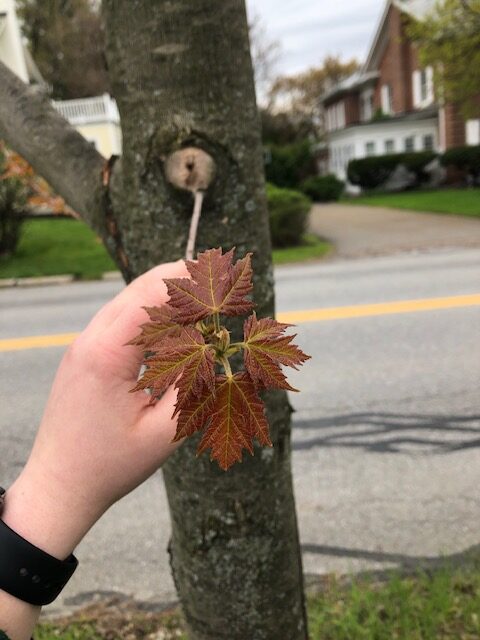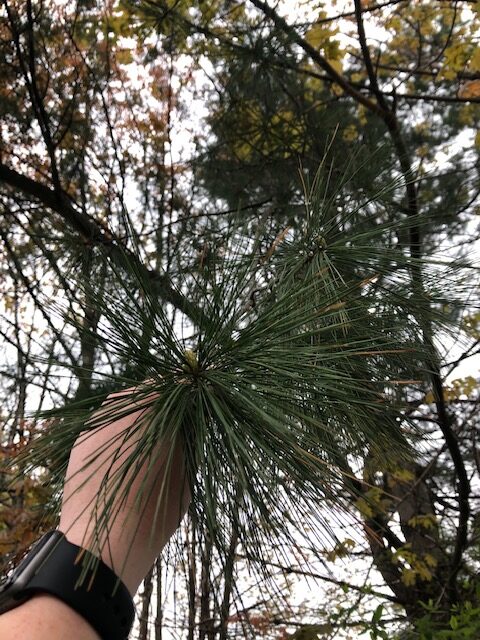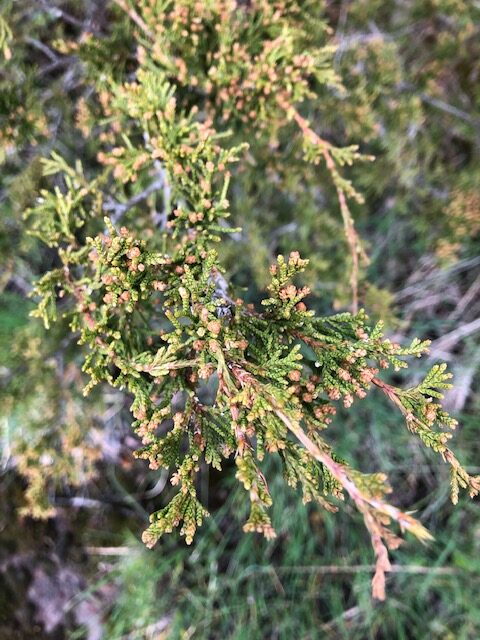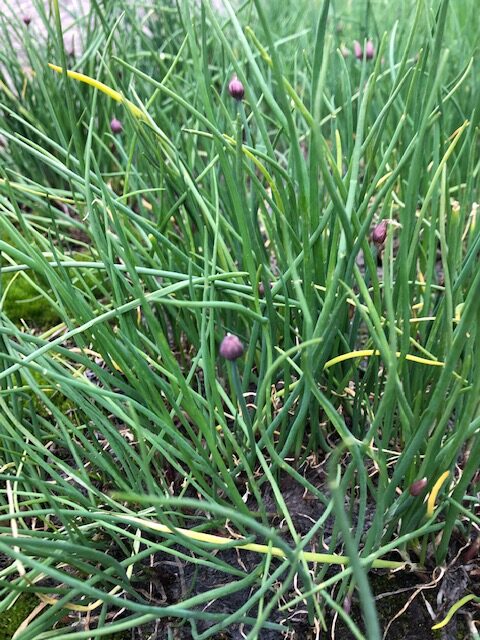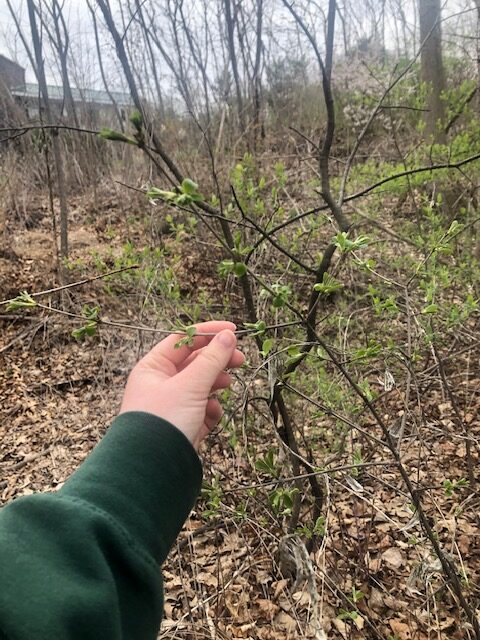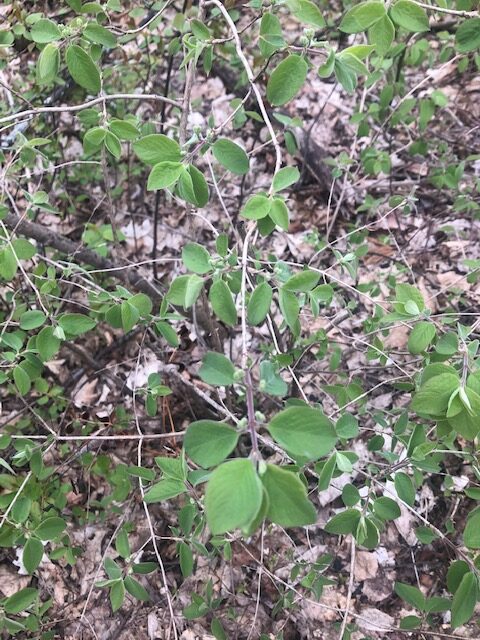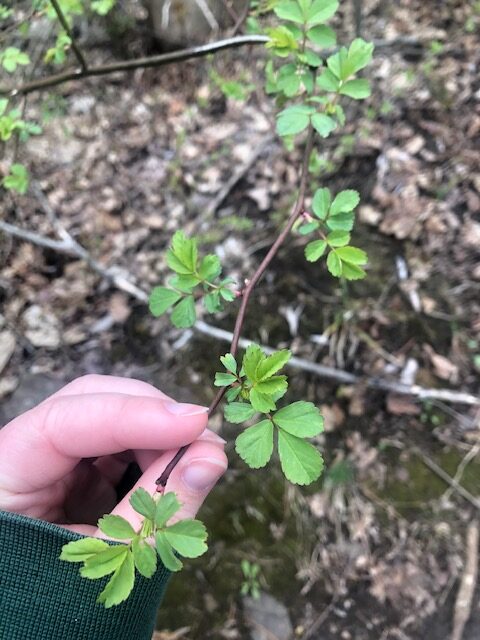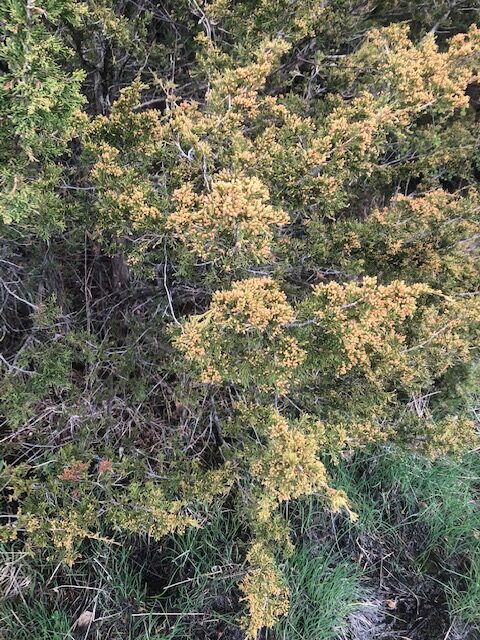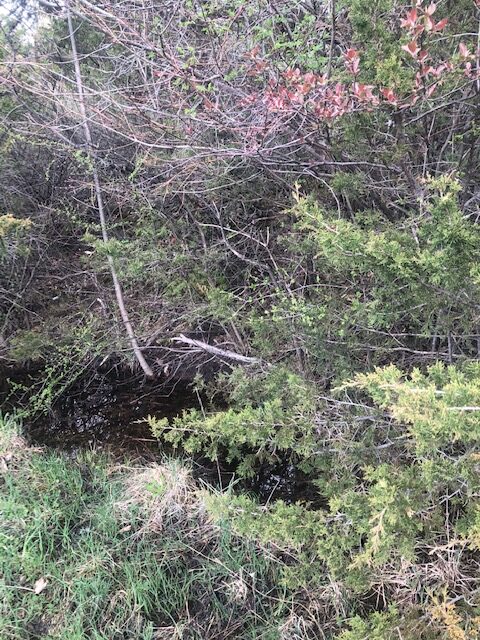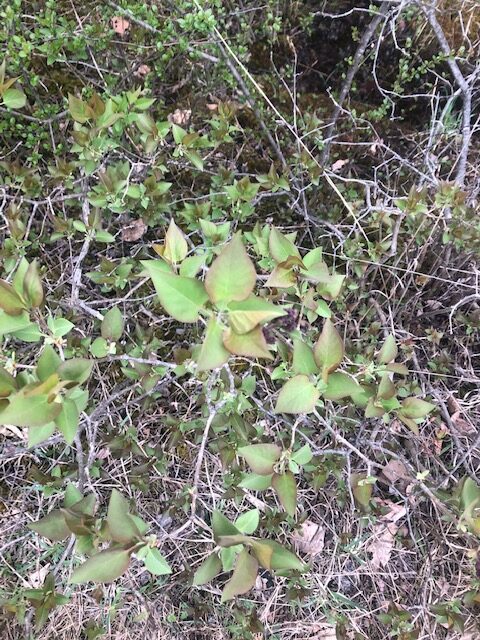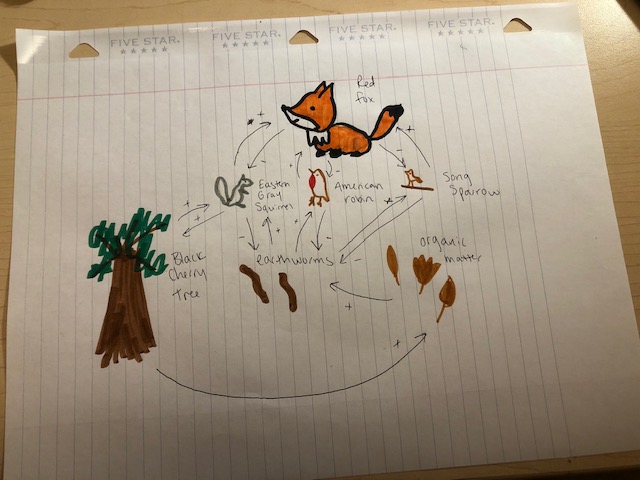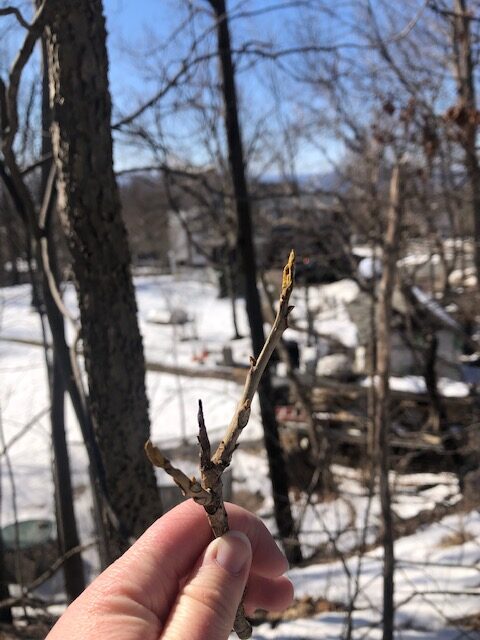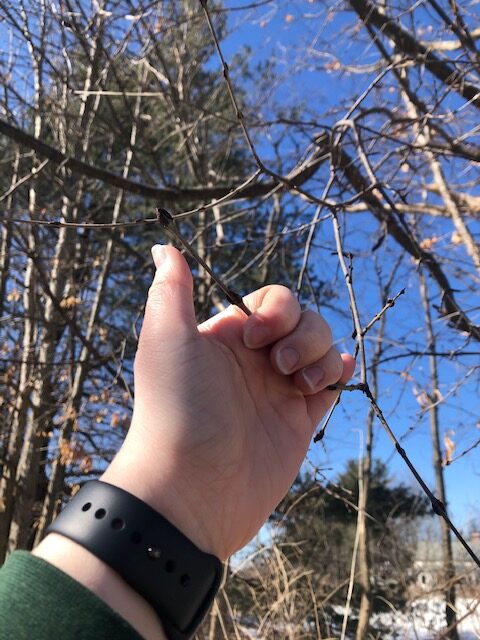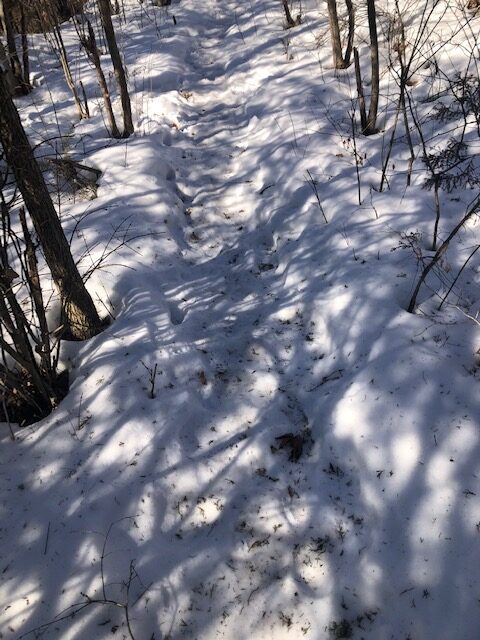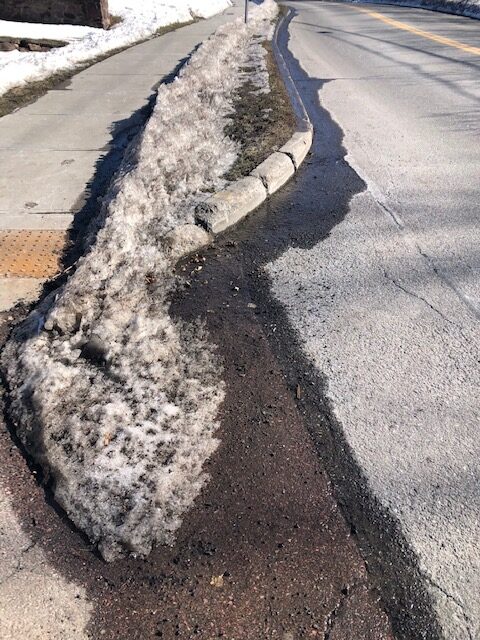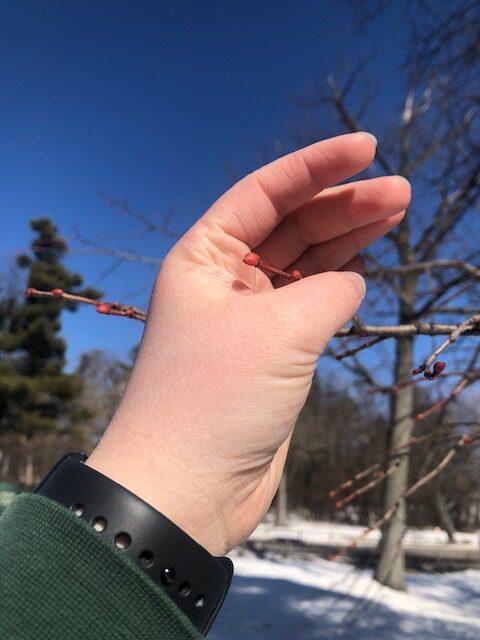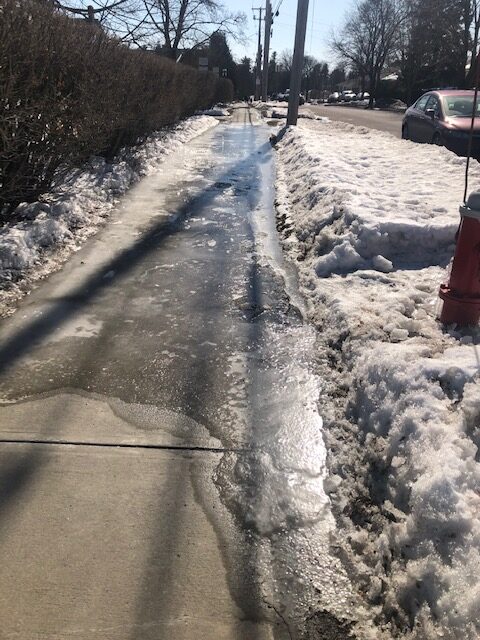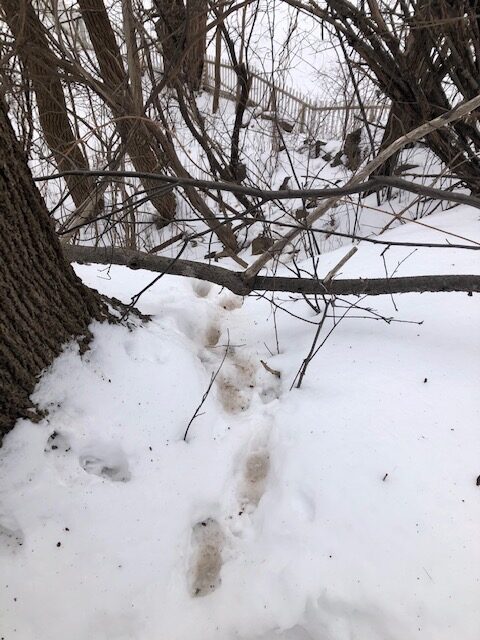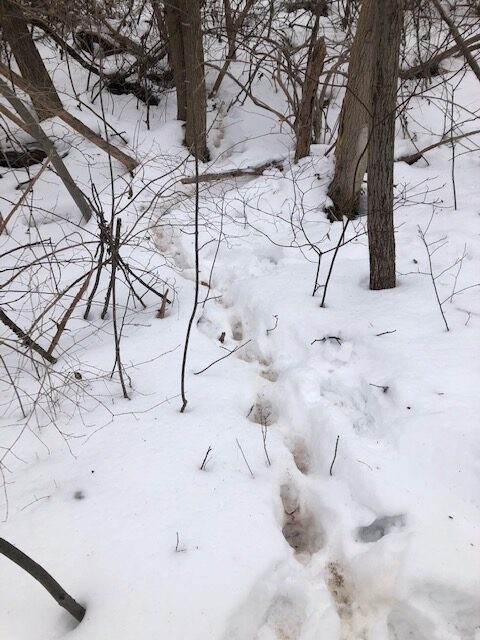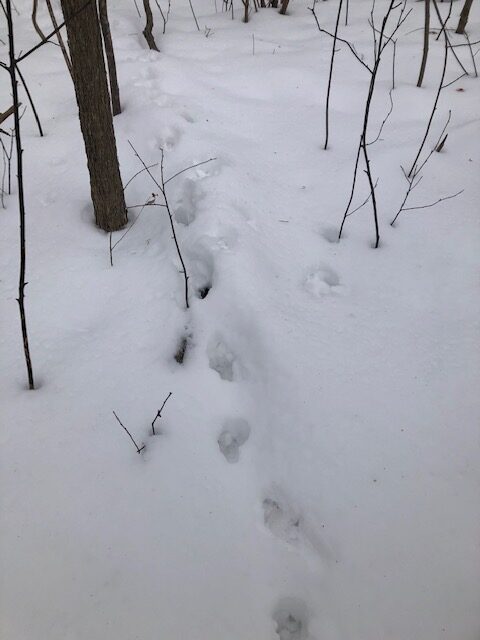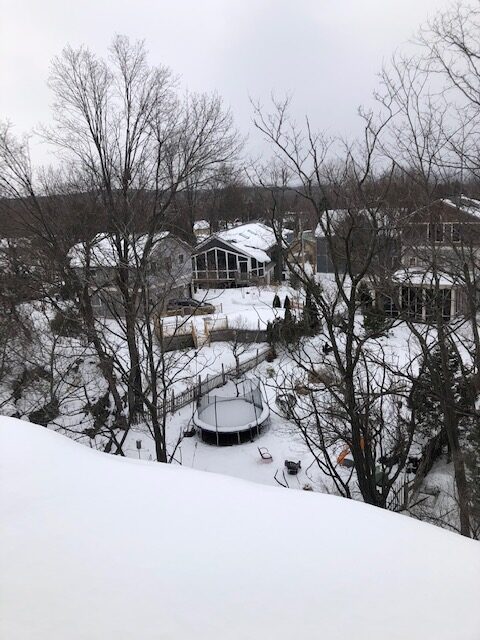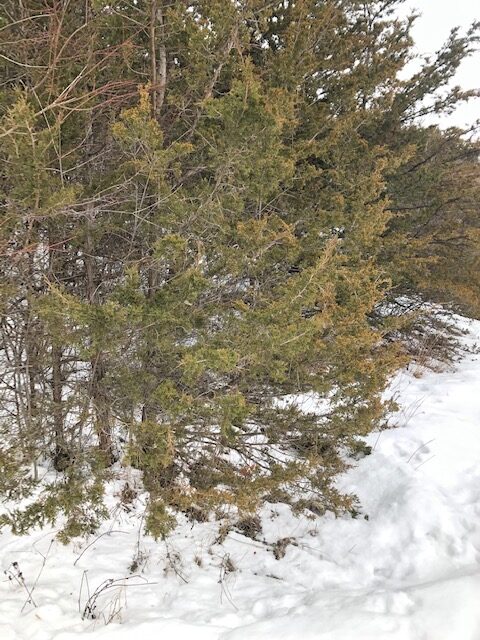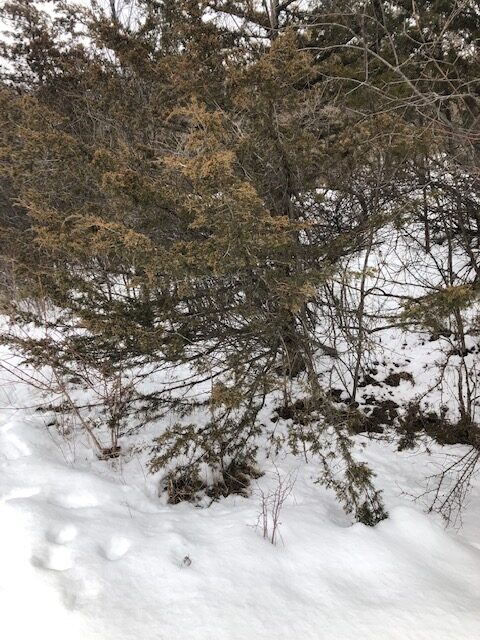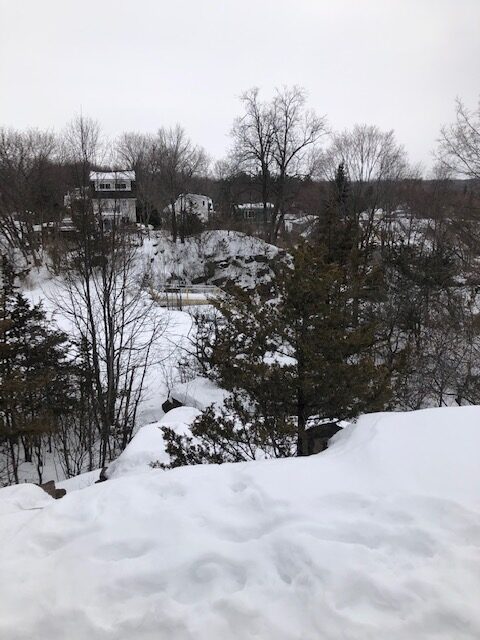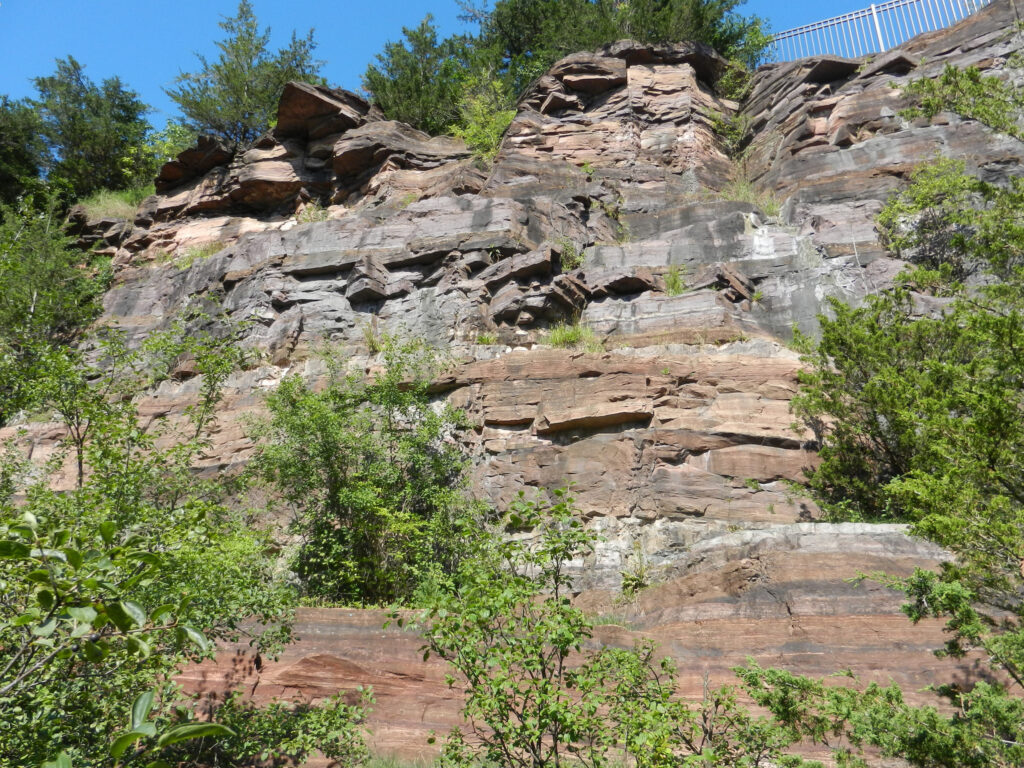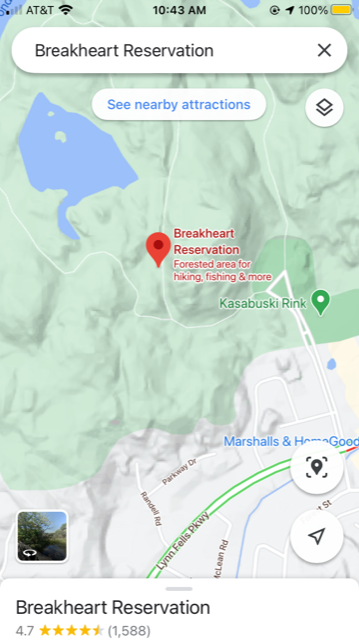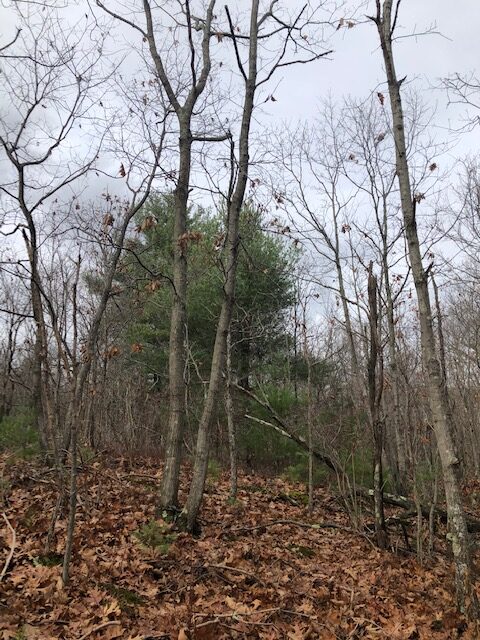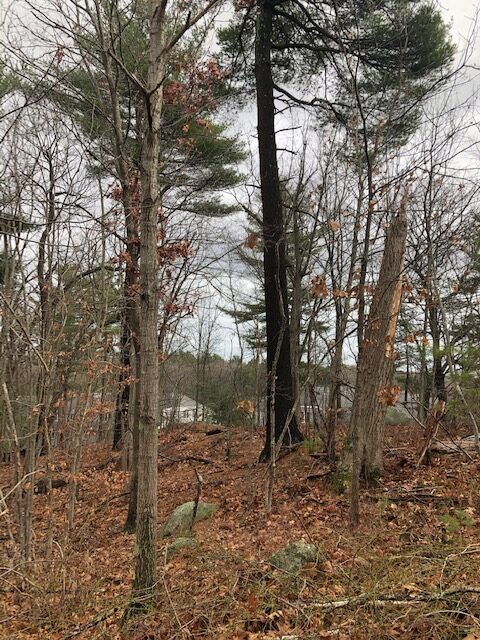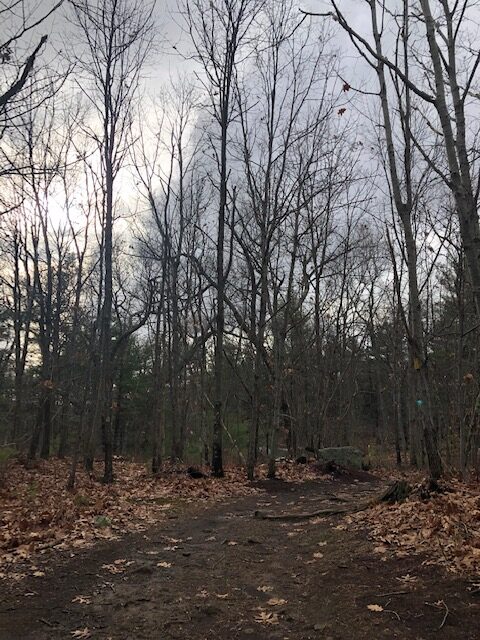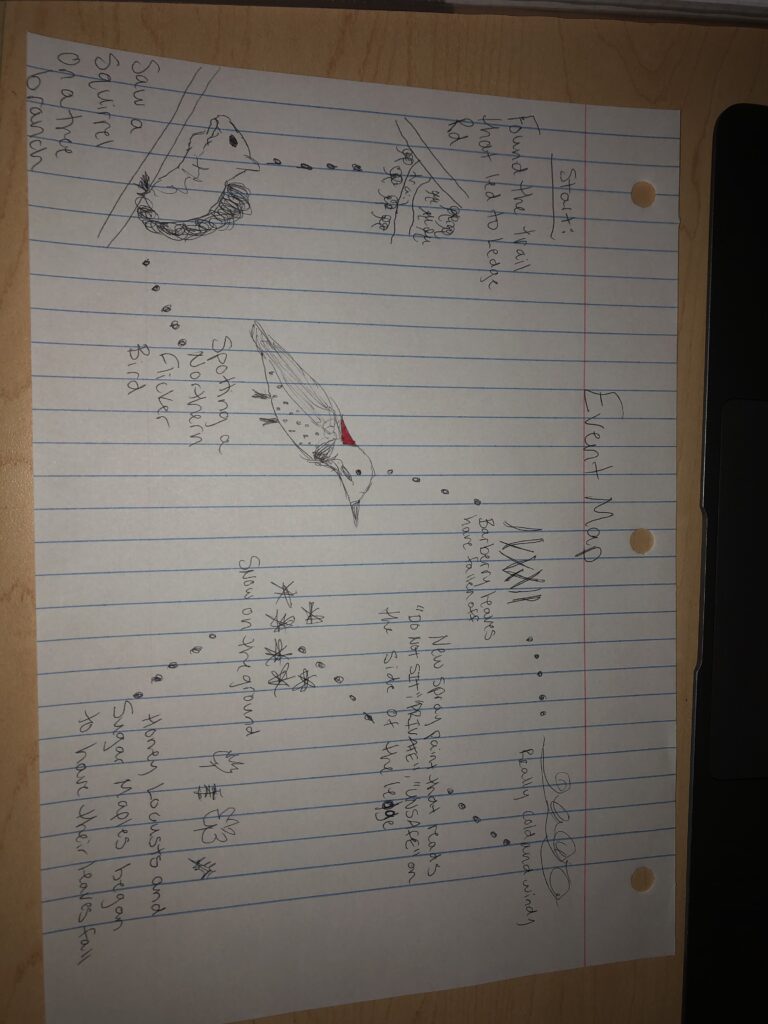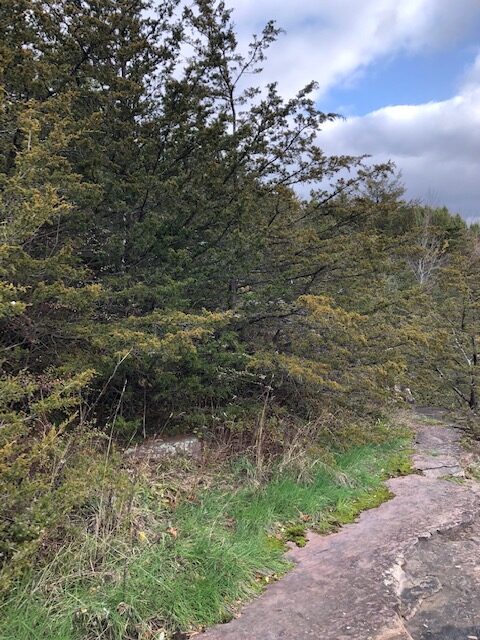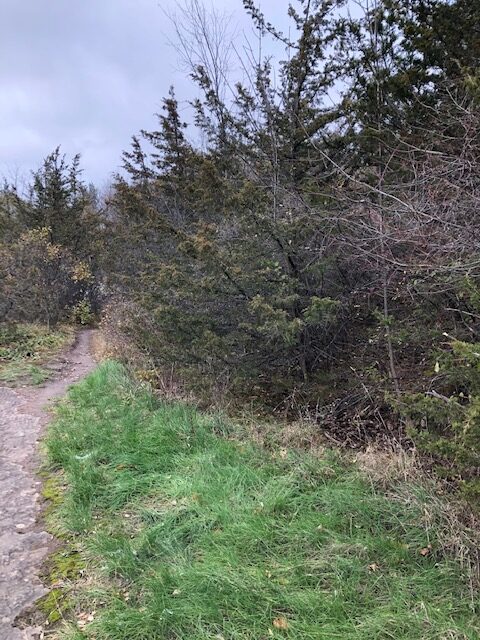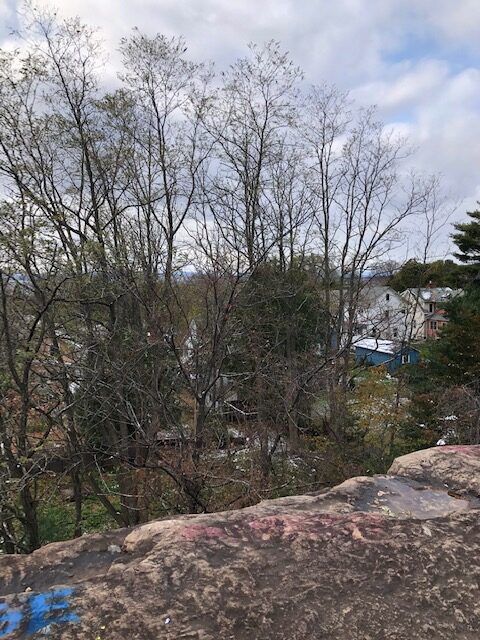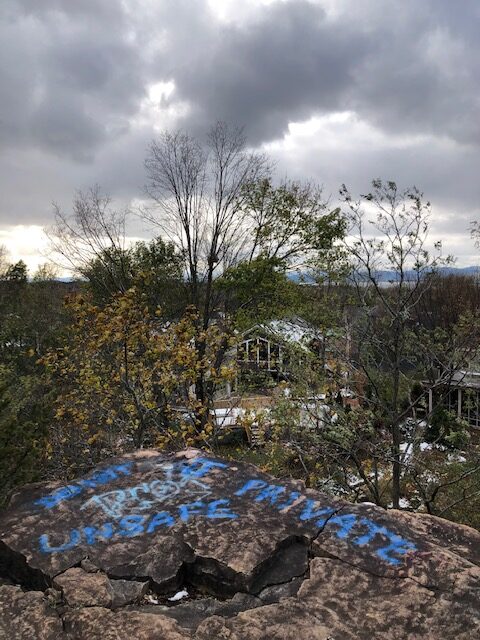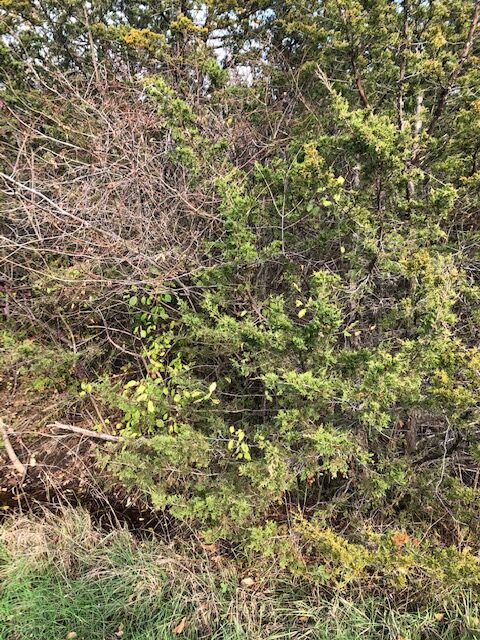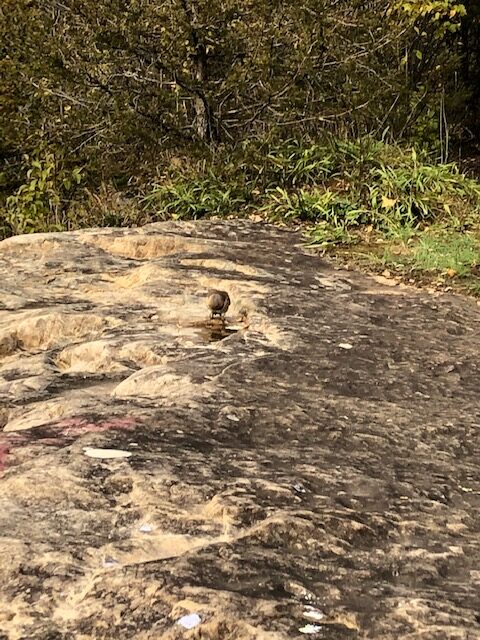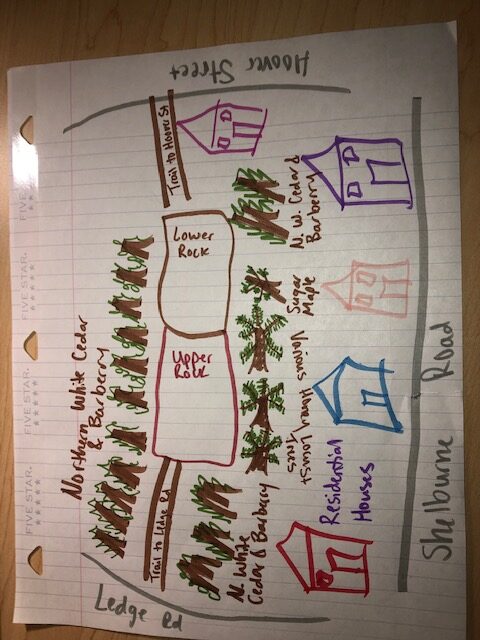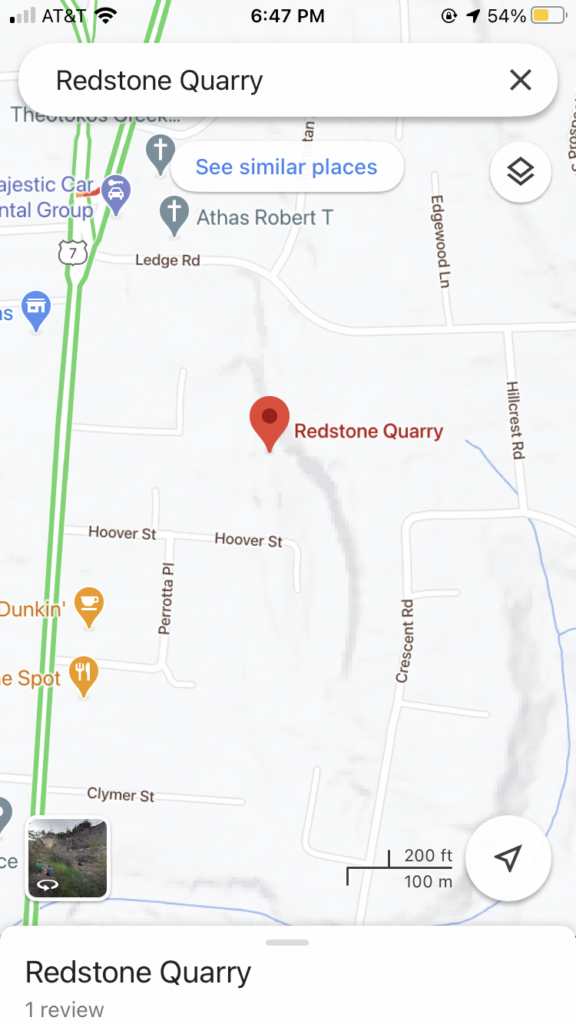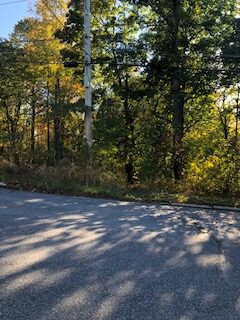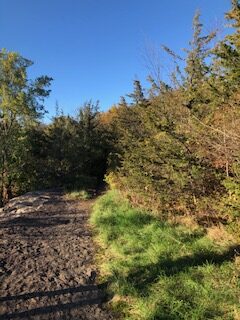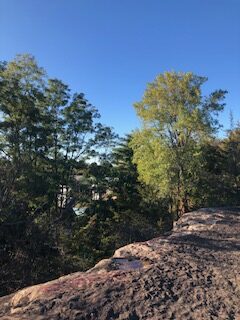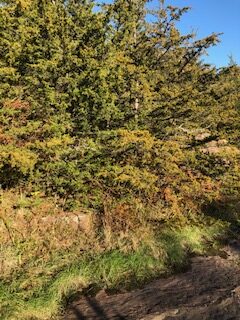I’ve had a lot of goodbyes with my UVM friends over the past couple weeks, but my final goodbye is to my phenology blog spot that I made a trip to about every other week over the past year.
In my last trip to the Redstone Quarry I actually brought my friend with me! She is a UVM student that is not in Rubenstein, but she still really enjoyed the trip to the Quarry this week. Around the actual Quarry area there was not much difference from when I went there a week ago, but on the path getting to the Quarry it was totally grown over compared to how it was the week before.
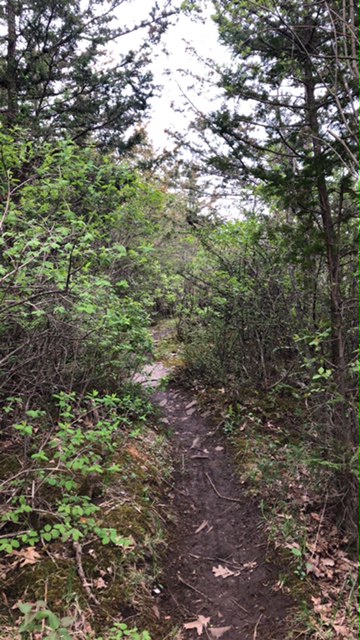
Other than this difference, there was not much else to write about that has changed.
Over the past year, the ways that culture and nature have intertwined at the Quarry has become quite evident to me. At the beginning of this year when I learned about how the Quarry came to be, I found out the Redstone building on campus was built from redstone from the Quarry, which is so interesting to me. Seeing the change from a place where rock was taken from to a place where rock and nature are observed is quite amazing. Now, when I passed by people going to the Quarry they were mainly using it for photography, going for a walk, or nature observation, which shows how the Quarry has been able to connect people to nature in an attainable way.
I totally consider myself a part of my place. I think I am a part of every place that I have visited and interacted with. Every natural area that I interact with gives me a sense of place because I am related to the land in one way or another. If I am able to have an impact on the land, I think I am considered to be apart of it.
Going to my phenology blog spot throughout the past year has given me a lot more respect for and made me much more aware of the natural world around me. Being home for a few days now, this was not something I realized while I was on campus, but have become aware of over the past few days. The other day I was sitting outside with my mom and started telling her which trees were which species, and that made me realize how much more attention I was paying to the nature around me compared to last summer.
